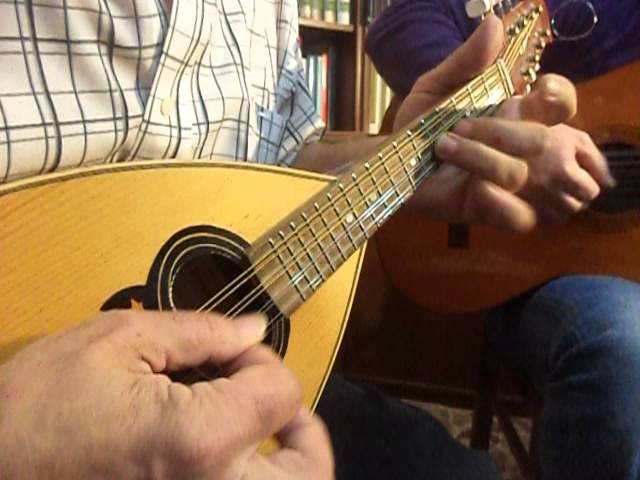Tarantella Napoletana – Italian Mandolin Music By Antonio Calsolaro
Tarantella Napoletana, (Italian tarantella by Napoli) played by the Italian mandolin Maestro ANTONIO CALSOLARO and Francesco Polito (Guitar), traditional folk music of Napoli and Italian culture, the Mandolin music was introduce, during the 18th century, in the “Italian Barbers Saloon”. The Maestro Calsolaro give us this dancing Tarantella music to his world friends, sponsored by
ITALIAN MUSIC MAESTRO ANTONIO CALSOLARO – LESSONS AND LIVE CONCERT
He’s preparing a Mandolin Master Class in the “Culture Palace of Alessano Lecce – Italy” the final week of March 2013, it will be divided in beginners and experts mandolin lessons, a full week of Mandolin sharing experience. He will give His own exclusive “Traditional Italian Sheet Music” to each participant If you need more info please call in Italy +39.333.6371644 or Email to info@ital-usa.com
Furthermore he’s available for live music concerts, exhibitions, shows, Italian party around the world, please contact us for your requirements
ITALIAN TARANTELLA – Tarantella Napoletana
Tarantella music is a folk dance music characterized by a fast upbeat tempo, usually in 6/8 time (sometimes 18/8 or 4/4), accompanied by tambourines (tamburello) and mandolin. It is among the most recognized of traditional Italian music, it names change according to the varies Italian region, Tammuriata in Campania (Naples – Napoli), Pizzica Pizzica in Lecce – Salento region, Sonu a ballu in Calabria. Tarantella is popular in Southern Italy and one of the symbols of the Italian culture in the world.
In the Salento’s region of Italy the bite of a locally common type of spider called “tarantula” was popularly believed to be highly poisonous and to lead to a hysterical condition known as Tarantism. The stated belief in the 16th and 17th centuries were that the victims needed to engage in a frenzied dance to prevent death of the disease using very rhythmic music, this kind of music was known Tarantella.
ITALIAN MANDOLIN Mandolins evolved from the lute family in Italy during the seventeenth and eighteenth centuries, and the deep bowled mandolin produced particularly in Naples became a common type in the nineteenth century. The original instrument was the mandore which evolved in the fourteenth century from the lute. The first evidence of modern steel-strung mandolins is from literature regarding popular Italian players who traveled through Europe teaching and giving concerts. Notable is Signor Leone and G. B. Gervasio who traveled widely between 1750 and 1810. This, with the records gleaned from the Italian Vinaccia family of luthiers in Naples, Italy, lead some musicologists to believe that the modern steel-strung mandolin was developed in Naples by the Vinaccia family. Gennaro Vinaccia was active circa 1710 to circa 1788, and Antonio Vinaccia was active circa 1734 to circa 1796. An early extant example of a mandolin is one built by Antonio Vinaccia in 1772 which resides at the Victoria and Albert Museum in London, England. Another is by Giuseppe Vinaccia built in 1763, residing at the Kenneth G. Fiske Museum of Musical Instruments in Claremont, California. The earliest extant mandolin was built in 1744 by Gaetano Vinaccia. It resides in the Conservatoire Royal de Musique in Brussels, Belgium
MAESTRO ITALIANO DE LA MANDOLINA
El maestro Antonio Calsolaro, junto a Francesco Polito, interpreta magistralmente con su Mandolina una pieza del folklore Napoletano (Napoles) con la sabiduria del Maestro y del hombre de experiencia que toca la mandolina desde pequeno en familia como expresion digna de la cultura y tradicion de Napoles, Italia. El Maestro Calsolaro es uno de los musicos mas importantes de Italia que mantienen, cultivan y desarrollan la pureza de la Musica Tradicional Folklorica Italiana

Napoli sarà sempre capitale dell’arte e della cultura. Bellissima.
taratella napoletana mandolin version
juste un mot: manifaïque
Bellissima.
Great happy music
Molto Bello !!!
nice song sounds beutifull
?
Bravissimi.
Awesome!!
BOSS
uno a 60 anni e uno a 35
Hey dude, great video! Thanks for sharing 🙂
Have fun playing along with some of our backing tracks.
Aria di casa nostra…Grazie ai Maestri Calsolaro e Polito per l’allegria che ci trasmettono e di cui abbiamo (tanto) bisogno!
Wowwwwwwwwwwwww Super.
Questa musica mi aiuta a ricordare i miei giorni in Italia, meraviglioso!
Bellissimo!! <3
What is the difference between Tarantella Napolitana AND Tarantella Siciliana?
Christian L. Caballero (235binelli) hi! Do you know where we can the tune please?
Preciosa música!
I’ll be putting myself through hell trying to learn this song.. but- It’s something I have to do..